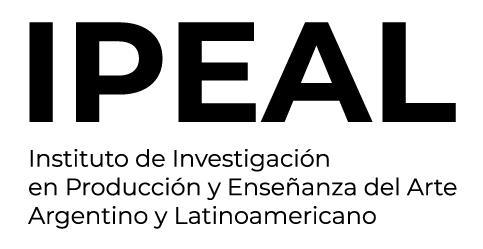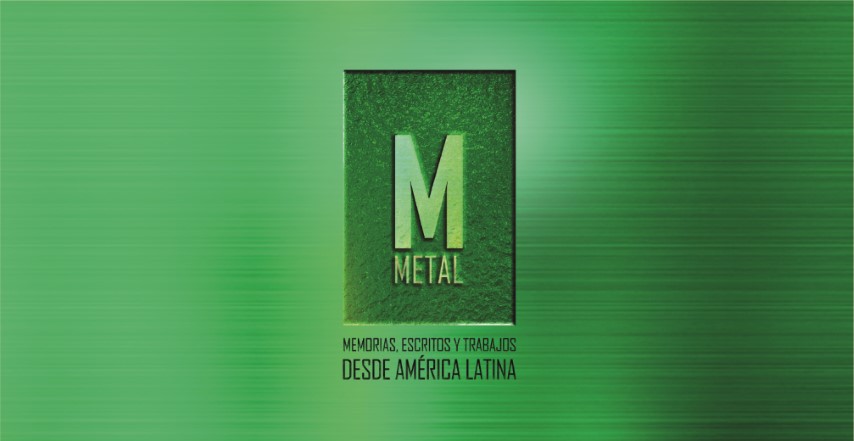Photography and Performative Practice. Reflections about Apnea and Moisés
DOI:
https://doi.org/10.24215/24516643e009Keywords:
Photography, performative practice, document, representationAbstract
Focusing on the work of two Argentinianphotographers —Apnea (2014-2015), byCecilia Lutufyan, and Moisés (2014-2015),by Mariela Sancari— this work reflects onthe place that the performative practiceoccupies in the language of photography.In both conceptual quests, the death, whichmakes an absence visible, is questioned and,through the participation of other factorsforeign to the project a performed situationis constructed. This situation is the centraltheme of the representation process thatquestions the photography as document ofwhat is real.References
Austin, J. L. (1998). Cómo hacer cosas con las palabras. Barcelona, España: Paidós.
Albarran Diego, J. (2012). Del fotoconceptualismo al fototableau. Fotografía, performance y escenificación en España (1970-2000). Salamanca, España: Ediciones Universidad de Salamanca.
Bal, M. (2012). Travelling concepts in the humanities. Toronto, Canadá: University of Toronto Press.
Benjamin, W. (2003). La obra de arte en la época de su reproductibilidad técnica. Ciudad de México, México: Itaca.
Butler, J. (1993). Cuerpos que importan. Sobre los límites materiales y discursivos del sexo. Buenos Aires, Argentina: Paidós.
Cartier–Bresson, H. (2014). El instante decisivo. Göttingen, Alemania: Steidl.
Coleman, A. D. (2004). El método dirigido. Notas para una definición. En J. Ribalta, Efecto real. Debates posmodernos sobre la fotografía. Barcelona, España: Gustavo Gili.
Contreras Lorenzini, M. J. (2008). Práctica performativa e intercorporeidad. Sobre el contagio de los cuerpos en acción. Apuntes, (130), 148-162. Recuperado de https://repositorio.uc.cl/bitstream/handle/11534/4623/000513504.pdf?sequence=1
Crimp, D. (2004). La actividad fotográfica de la posmodernidad. En J. Ribalta, Efecto real. Debates posmodernos sobre la fotografía. Barcelona, España: Gustavo Gili.
Derrida, J. (1971). Márgenes de la filosofía. Madrid, España: Cátedra.
Del negro, M. L. (2009). La Fotografía y el conocimiento de la historia: Entre el documento y el acontecimiento visual. Ponencia presentada en las XII Jornadas Interescuelas del Departamento de historia. Facultad de Humanidades y Centro Regional Universitario de Bariloche, Universidad Nacional de Comahue, San Carlos de Bariloche, Argentina.
Fontcuberta, J. (2016). El beso de Judas. Barcelona, España: Gustavo Gili.
Lutufyan, C. (2014-2015). Apnea [Serie de fotografías]. Recuperada de https://www.cecilialutufyan.com/apnea
Rosler, M. (2004). Dentro, alrededor y otras reflexiones. Sobre la fotografía documental. En J. Ribalta, Efecto real. Debates posmodernos sobre la fotografía. Barcelona, España: Gustavo Gili.
Sancari, M. (2014-2015). Moisés [Serie de fotografías]. Recuperada de http://marielasancari.com
Downloads
Published
How to Cite
Issue
Section
License
The acceptance of the manuscript by the magazine means the non-exclusive cession of the property rights of the authors in favour of the editor, who allows the reuse, after publication (post print), under a license Attribution-NonCommercial-NoDerivatives 4.0 International.
According to these terms, the material can be copied and redistributed by any means or in any format as long as a) the author and original source of the publication are quoted (magazine and URL of the work), access to the license is provided and whether changes have been made is mentioned; and b) the material is not used for commercial purposes.
The cession of non-exclusive rights means that after the publication (post print) in Metal the authors can publish their work in any language, means and format; in such cases it must be mentioned that the material was originally published in this magazine. Such cession also means the authorization of the authors for the work to be collected by SEDICI, the institutional archive of the Universidad Nacional de La Plata, and to be spread in the databases that the editorial team considers appropriate to increase the visibility of the publication and its authors.
Moreover, the magazine encourages the authors to deposit their productions in other institutional and thematic archives under the principle that offering the society the scientific and academic production without any restrictions contributes to a greater exchange of the global knowledge.



























